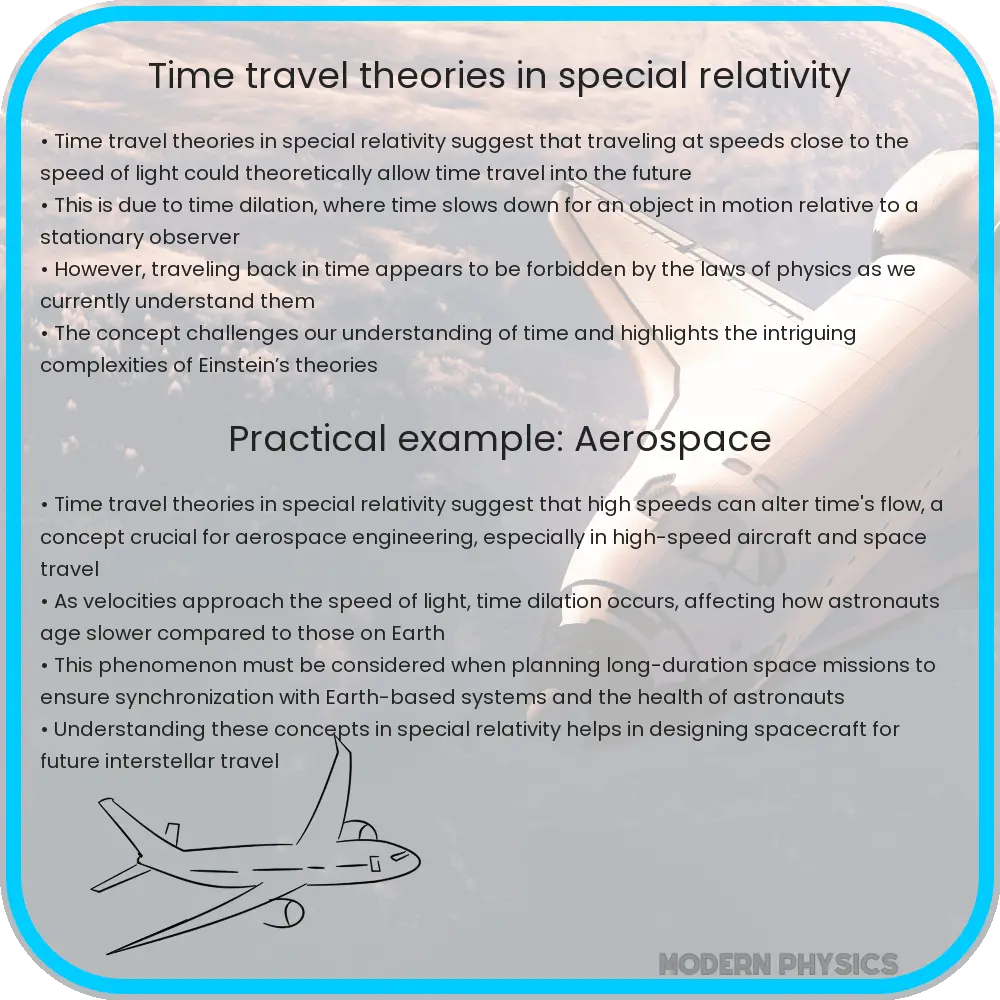Explore Einstein’s theories of Special and General Relativity, and their implications for the possibility of time travel in modern physics.

Exploring Time Travel: Einstein’s Theory of Special Relativity
Time travel, a concept that has captivated the human imagination for centuries, finds a scientific basis in Albert Einstein’s Theory of Special Relativity. This groundbreaking theory, proposed in 1905, revolutionized our understanding of time and space, laying the foundation for modern physics and the intriguing possibility of time travel.
Einstein’s Special Relativity: The Basics
At the core of Special Relativity is the idea that the laws of physics are the same for all non-accelerating observers, and that the speed of light in a vacuum is constant, regardless of the motion of the light source. This led to two key insights:
- Time Dilation: Time can slow down relative to the observer’s speed. As one approaches the speed of light, time slows down significantly compared to an observer at rest. This phenomenon is expressed by the equation \(\Delta t’ = \Delta t / \sqrt{1 – v^2/c^2}\), where \(\Delta t’\) is the time experienced by the moving observer, \(\Delta t\) is the time experienced by the stationary observer, \(v\) is the velocity of the moving observer, and \(c\) is the speed of light.
- Length Contraction: Objects in motion are measured to be shortened in the direction of motion. This effect, too, becomes significant at speeds close to the speed of light. The contraction is given by \(L’ = L \sqrt{1 – v^2/c^2}\), where \(L’\) is the contracted length, \(L\) is the original length, and \(v\) and \(c\) retain their earlier meanings.
The implications of these discoveries are profound. They suggest that time is not an absolute concept but varies depending on the observer’s state of motion. This realization led to the theoretical possibility of time travel, especially when considering scenarios involving speeds close to that of light.
Einstein’s Further Contribution: The General Theory of Relativity
Building upon the principles of Special Relativity, Einstein introduced the General Theory of Relativity in 1915. This theory extended the concept of relativity to include gravity, envisioning it not as a force but as a curvature of spacetime caused by mass. This groundbreaking idea introduced new possibilities for time travel, particularly through concepts like wormholes and time dilation in strong gravitational fields.
While Einstein’s theories opened the door to the theoretical possibility of time travel, they also set limits. For instance, the cosmic speed limit—the speed of light—remains an unbreakable barrier in Special Relativity. Thus, while time travel into the future appears theoretically feasible, traveling back in time presents significant challenges under the current understanding of physics.
Challenges and Possibilities in Time Travel
Despite the tantalizing possibilities offered by Einstein’s theories, time travel is fraught with challenges. The most significant of these is the requirement of immense energy and speeds. To achieve time dilation, an object needs to travel at speeds close to the speed of light, a feat that is currently beyond our technological capabilities. Additionally, maintaining human survival at such extreme velocities is another hurdle yet to be overcome.
Wormholes: A Theoretical Gateway
General Relativity also suggests the existence of wormholes, hypothetical bridges connecting distant points in spacetime. These wormholes could, in theory, allow for instant travel between vast distances, potentially even enabling travel to different times. However, the stability of these structures requires exotic matter with negative energy, which has not been found in nature.
The Paradoxes of Time Travel
Time travel also introduces complex paradoxes, the most famous being the “grandfather paradox.” This paradox questions what would happen if a time traveler went back in time and prevented their grandfather from meeting their grandmother, thereby preventing the time traveler’s birth. Such paradoxes challenge the very fabric of causality and highlight the conceptual complexities of time travel.
The Current State of Time Travel Research
Today, time travel remains a theoretical concept, with scientists exploring its possibilities through advanced theoretical models and simulations. While practical time travel is not yet a reality, the ongoing research in quantum mechanics, spacetime physics, and cosmology continues to provide valuable insights into the nature of time and the universe.
Conclusion
Albert Einstein’s theories of Special and General Relativity fundamentally changed our understanding of time and space, suggesting that time travel, once a mere science fiction trope, could have a basis in scientific reality. While we are far from achieving actual time travel, the continuing exploration of Einstein’s ideas keeps this fascinating possibility open for future generations. The journey from theory to reality is filled with technological, physical, and philosophical challenges, making time travel one of the most intriguing frontiers in modern physics and cosmology.
Is this conversation helpful so far?
